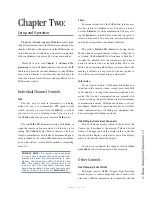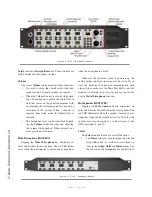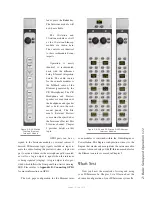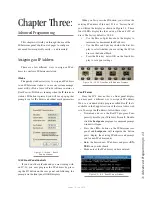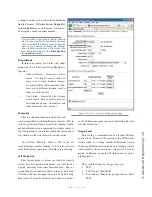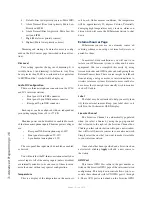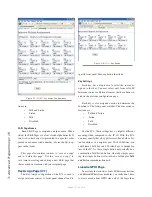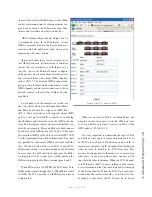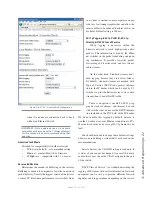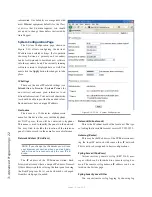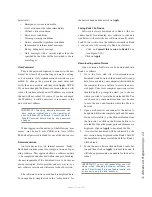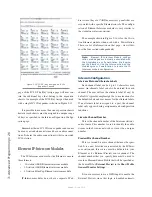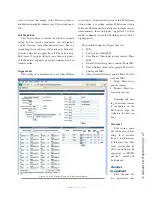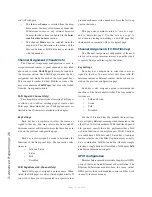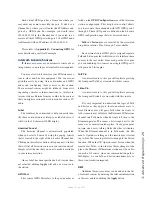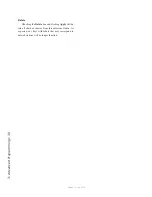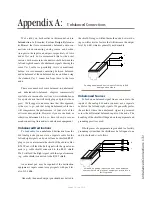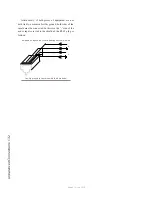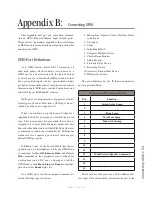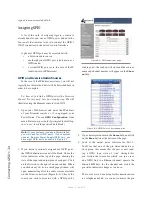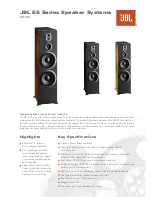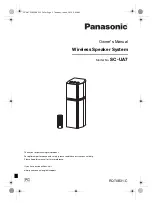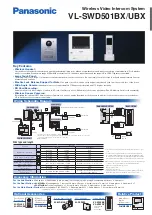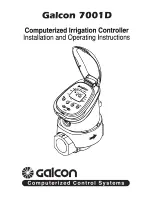
3: A
dv
an
ce
d P
ro
gr
am
m
in
g • 2
1
Version 1.2 July 2010
when two nodes are connected back to back
without an Ethernet Switch.
IMPORTANT! Only a single device on a Livewire
network should ever be set to 7 (Always Master).
For this reason we do not recommend using that
selection.
Livewire Clock Mode
Provided for compatibility with older revisions:
•
IP low rate (default) – recommended setting
•
Ethernet – compatible with 1.x firmware
•
IP High rate – compatible with 2.1.x master
Receive Buffer Size
Determines the amount of buffering in the receiver.
Buffering is needed to compensate for jitter in network
packet delivery. Usually the biggest source of the jitter is
a source PC. Real-time performance varies widely from
one system to another; some computers can pro-
vide very low timing irregularities and allow the
receive buffer to be reduced to achieve lower au-
dio delay. Default setting is 100 ms.
801.1p Tagging, 802.1p VLAN ID, 802.1q
Priority, & DSCP Class of Service
802.1p tagging is necessary within the
Livewire network to mark high-priority audio
packets. This information is used by the Ether-
net switches in the packet scheduling and queu-
ing mechanism. It provides low-jitter packet
forwarding of Livewire clock and low-latency
audio streams.
On the other hand, Standard streams don’t
need tagging, because they are not low-latency.
By default, standard streams are marked with
Type of Service (DSCP code points) informa-
tion in the IP header which can be used by L3
switches to provide better service to our audio
streams than to best effort IP traffic.
There is an option to enable L2 802.1p tag-
ging on standard streams, and this may be used
with switches that do not use the DSCP informa-
tion included in the TOS field of the IP header.
We do not enable this tagging by default, because it
wouldn’t work in cross-over Ethernet connection to PCs.
Most network cards do not accept 802.1p frames by de-
fault.
You should not need to change these default settings
unless you are building a system that is not based on our
recommendations.
In Axia devices, the VLAN ID setting is read-only. It
is always 0 and cannot be changed. As a result Livewire
audio always uses the native VLAN assigned to the port
of the switch.
“DSCP Class of Service” is a standard describing the
tagging of IP frames with service information. Network
equipment can be set up to provide different forward-
ing delay and drop precedence depending on the service
Figure 3-9: IC.20 - Livewire QoS Configuration
Содержание IP-Intercom System
Страница 44: ...Connecting GPIO 36 Version 1 2 July 2010...
Страница 45: ...Connecting GPIO 37 Version 1 2 July 2010...
Страница 48: ...Connecting GPIO 40 Version 1 2 July 2010...
Страница 52: ...Axia Audio a Telos Company 1241 Superior Ave Cleveland Ohio 44114 USA 1 216 241 7225 www AxiaAudio com...

